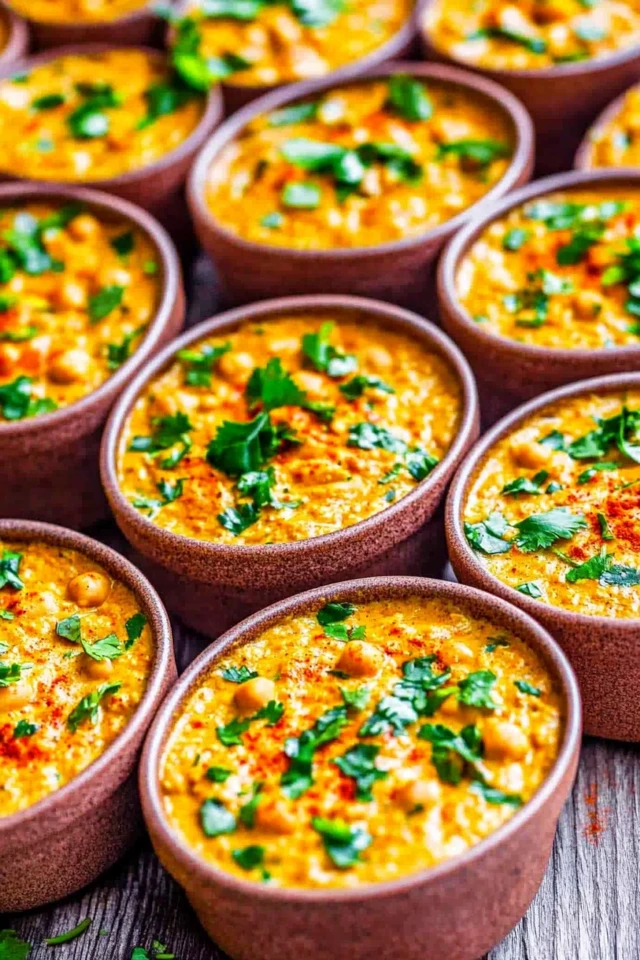Introduction
In the hustle and bustle of daily life, finding time to prepare healthy and delicious meals can be a challenge. Batch-Cooked Vegan Curry Bowls: Flavor-Packed & Ready offer the perfect solution for busy individuals seeking nutritious, satisfying, and easy-to-assemble meals throughout the week. Curries are celebrated for their rich flavors, aromatic spices, and comforting warmth, making them a favorite in kitchens around the world. This vegan adaptation not only retains all the beloved qualities of traditional curries but also embraces plant-based ingredients, ensuring a compassionate and health-conscious dining experience.
By batch-cooking these vegan curry bowls, you can enjoy a variety of flavors and textures without the daily effort of cooking. Whether you’re meal prepping for the week, hosting a gathering, or simply craving a hearty dish, these curry bowls are designed to impress both vegans and non-vegans alike. In this comprehensive guide, we’ll explore the benefits of batch-cooking vegan curries, provide detailed recipes for a diverse range of curry bowls, and share tips and variations to customize them to your liking. Let’s embark on creating flavor-packed vegan curry bowls that are ready to delight your taste buds at any time!
Why Choose Batch-Cooked Vegan Curry Bowls?
Opting for batch-cooked vegan curry bowls offers numerous advantages that cater to both your health and lifestyle needs. Here’s why this meal prep strategy stands out:
Nutritional Powerhouse
- Plant-Based Proteins: Incorporating lentils, chickpeas, tofu, and other plant-based proteins ensures a robust protein intake essential for muscle repair and overall health.
- Variety of Vegetables: A colorful assortment of vegetables provides a wide range of vitamins, minerals, and antioxidants, supporting immune function and reducing the risk of chronic diseases.
- Healthy Fats: Using coconut milk, olive oil, and nuts introduces healthy fats that promote heart health and enhance satiety.
- Complex Carbohydrates: Serving curries with whole grains like brown rice or quinoa offers sustained energy and supports digestive health.
Time-Saving
Batch-cooking curries allows you to prepare multiple servings in one go, significantly reducing daily cooking time. This efficiency is perfect for those with busy schedules who still want to enjoy home-cooked, nutritious meals without the hassle.
Cost-Effective
Preparing meals in bulk often leads to substantial cost savings. Buying ingredients in larger quantities and minimizing food waste by utilizing all components of the meal prep ensures you get the most value out of your grocery budget.
Consistency and Portion Control
Batch-cooking enables you to maintain consistency in your diet and manage portion sizes effectively. This approach is particularly beneficial for individuals aiming to lose weight, build muscle, or simply maintain a balanced diet.
Versatility and Customization
Vegan curries are incredibly versatile, allowing you to experiment with different spices, vegetables, and proteins. This flexibility ensures that your meal prep remains exciting and tailored to your personal taste preferences and dietary requirements.
Ingredients
Creating a variety of Batch-Cooked Vegan Curry Bowls requires a blend of flavorful spices, wholesome ingredients, and plant-based proteins. Here’s what you’ll need for a week’s worth of delicious curry bowls:
Common Base Ingredients
- Olive Oil or Coconut Oil: 1/4 cup (for sautéing)
- Onions: 4 large, diced
- Garlic: 8 cloves, minced
- Ginger: 4 tablespoons, freshly grated
- Canned Tomatoes: 4 cups (crushed or diced)
- Coconut Milk: 4 cups (full-fat or light)
- Vegetable Broth: 4 cups
- Salt and Pepper: To taste
Spices and Herbs
- Ground Cumin: 4 teaspoons
- Ground Coriander: 4 teaspoons
- Turmeric Powder: 2 teaspoons
- Garam Masala: 4 teaspoons
- Paprika: 2 teaspoons
- Chili Powder or Cayenne Pepper: 1-2 teaspoons (adjust to heat preference)
- Fresh Cilantro: For garnish
Proteins
Choose one or a combination of the following:
- Chickpeas: 4 cups (cooked or canned, rinsed and drained)
- Lentils: 4 cups (cooked)
- Tofu: 2 blocks (14 oz each), pressed and cubed
- Tempeh: 2 blocks, cubed
Vegetables
- Bell Peppers: 4 (various colors), sliced
- Carrots: 6 large, sliced
- Spinach: 4 cups (fresh)
- Cauliflower: 2 heads, florets
- Sweet Potatoes: 4 medium, cubed
- Green Beans: 4 cups, trimmed
- Zucchini: 4 medium, sliced
- Peas: 2 cups (frozen or fresh)
Grains (for serving)
- Brown Rice: 5 cups (uncooked)
- Quinoa: 5 cups (uncooked)
- Naan or Whole Wheat Flatbread: Optional, for serving
Additional Flavor Enhancers
- Lime Juice: 1/4 cup
- Soy Sauce or Tamari: 1/4 cup (for depth of flavor)
- Maple Syrup or Agave Nectar: 2 tablespoons (to balance acidity)
- Fresh Lime or Lemon Slices: For garnish
Ingredient Breakdown
- Spices: Essential for building the depth of flavor characteristic of curries.
- Coconut Milk: Adds creaminess and a subtle sweetness, balancing the spices.
- Vegetables: Provide texture, color, and a variety of nutrients, making each curry bowl vibrant and nutritious.
- Proteins: Ensure each meal is hearty and satisfying, supporting muscle health and overall wellness.
- Grains: Serve as a nourishing base, absorbing the rich curry flavors and providing energy.
Instructions
Preparing Batch-Cooked Vegan Curry Bowls involves organizing your cooking process to maximize efficiency and flavor. Follow these step-by-step instructions to create a week’s worth of delicious curry meals in approximately 2 hours.
Step 1: Prepare the Grains
- Cook the Brown Rice:
- Rinse 5 cups of brown rice under cold water.
- In a large pot, combine the rinsed rice with 10 cups of water.
- Bring to a boil, then reduce the heat to low, cover, and simmer for about 45 minutes or until the water is absorbed and the rice is tender.
- Remove from heat and let it sit, covered, for 10 minutes. Fluff with a fork before serving.
- Cook the Quinoa:
- Rinse 5 cups of quinoa under cold water.
- In a separate pot, combine the quinoa with 10 cups of water.
- Bring to a boil, then reduce the heat to low, cover, and simmer for about 15 minutes or until the water is absorbed and the quinoa is tender.
- Remove from heat and let it sit, covered, for 5 minutes. Fluff with a fork before serving.
Step 2: Cook the Proteins
- Prepare the Chickpeas and Lentils:
- If using canned chickpeas and lentils, rinse and drain them thoroughly.
- If cooking from scratch, ensure they are cooked until tender.
- Prepare the Tofu and Tempeh:
- Press the tofu to remove excess moisture and cut it into cubes.
- In a skillet, heat 1 tablespoon of olive oil over medium heat.
- Add the tofu cubes and sauté until golden brown on all sides. Remove and set aside.
- Repeat the same process for tempeh, using another tablespoon of olive oil if needed.
Step 3: Sauté the Aromatics
- Heat the Oil:
- In a large pot or Dutch oven, heat 1/4 cup of olive oil or coconut oil over medium heat.
- Cook Onions, Garlic, and Ginger:
- Add the diced onions to the pot and sauté until they become translucent, about 5 minutes.
- Add the minced garlic and grated ginger, cooking for an additional 2 minutes until fragrant.
Step 4: Build the Curry Base
- Add Spices:
- Stir in the ground cumin, ground coriander, turmeric powder, garam masala, paprika, and chili powder or cayenne pepper.
- Cook the spices with the aromatics for about 1-2 minutes to release their flavors.
- Add Tomatoes and Coconut Milk:
- Pour in the canned tomatoes and coconut milk, stirring to combine.
- Bring the mixture to a gentle simmer.
- Add Vegetable Broth:
- Pour in the vegetable broth to achieve your desired curry consistency. For thicker curries, use less broth; for soupier curries, add more.
Step 5: Incorporate Vegetables and Proteins
- Add Vegetables:
- Add the sliced bell peppers, carrots, cauliflower florets, sweet potatoes, green beans, zucchini, and peas to the pot.
- Stir to ensure all vegetables are well-coated with the curry base.
- Add Proteins:
- Incorporate the cooked chickpeas, lentils, tofu, and tempeh into the curry.
- Stir gently to combine all ingredients.
Step 6: Simmer the Curry
- Cook the Curry:
- Reduce the heat to low, cover the pot, and let the curry simmer for about 25-30 minutes, or until the vegetables are tender and the flavors have melded together.
- Adjust Seasonings:
- Taste the curry and adjust the salt, pepper, or spices as needed.
- Stir in the lime juice, soy sauce or tamari, and maple syrup or agave nectar to balance the flavors.
Step 7: Portion and Store
- Divide into Containers:
- Using meal prep containers, portion out the cooked brown rice or quinoa as the base.
- Ladle the curry mixture over the grains, ensuring each container has a balanced portion of vegetables and proteins.
- Garnish:
- Sprinkle fresh cilantro on top and add any additional toppings like avocado slices, vegan feta cheese, or a sprinkle of nuts and seeds.
- Store:
- Seal the containers tightly and store them in the refrigerator for up to 5 days.
- For longer storage, freeze individual portions for up to 3 months. Thaw overnight in the refrigerator before reheating.
Step 8: Reheat and Serve
- Reheat the Curry Bowls:
- Microwave the curry bowls for 2-3 minutes, stirring halfway through.
- Alternatively, reheat on the stovetop over medium heat until warmed through.
- Serve:
- Enjoy your Batch-Cooked Vegan Curry Bowls with a side of naan or flatbread if desired.
Tips and Variations
Enhance your Batch-Cooked Vegan Curry Bowls with these helpful tips and creative variations:
1. Experiment with Different Spices
- Curry Powder: Substitute some of the ground spices with your favorite curry powder for varied flavor profiles.
- Smoked Paprika: Adds a smoky depth to the curry.
- Cinnamon Stick: Simmer a cinnamon stick in the curry for an aromatic twist, removing it before serving.
2. Incorporate Fresh Herbs and Aromatics
- Fresh Basil or Mint: Add chopped fresh basil or mint just before serving for a burst of freshness.
- Green Chilies: Include sliced green chilies for an extra kick of heat.
3. Use Alternative Proteins
- Seitan: A great high-protein option that absorbs curry flavors well.
- Edamame: Adds a pop of color and a unique texture to the curry.
4. Make It Creamier
- Nut Cream: Blend soaked cashews or almonds into the curry for a creamier texture without coconut milk.
- Plant-Based Yogurt: Stir in a few tablespoons of unsweetened plant-based yogurt before serving.
5. Add a Tangy Twist
- Tamarind Paste: Incorporate tamarind paste for a tangy and slightly sweet flavor.
- Vinegar: A splash of apple cider vinegar can brighten the overall taste of the curry.
6. Include Seasonal Vegetables
- Winter: Add butternut squash or Brussels sprouts.
- Summer: Incorporate zucchini or eggplant for a lighter curry.
7. Make It Gluten-Free
- Ensure All Ingredients are Gluten-Free: Use tamari instead of soy sauce and verify that all spice mixes are gluten-free.
8. Add a Sweet Element
- Maple Syrup or Agave Nectar: A touch of sweetness balances the spices and acidity.
- Dried Fruits: Add raisins or chopped dates for natural sweetness and texture.
9. Create Layered Bowls
- Rice and Quinoa Mix: Combine brown rice and quinoa for a unique grain base.
- Different Protein Sections: Arrange different proteins in separate sections of the bowl for variety.
10. Enhance Presentation
- Garnish with Nuts and Seeds: Sprinkle toasted almonds, pumpkin seeds, or sesame seeds for added crunch.
- Use Vibrant Veggies: Incorporate colorful vegetables like purple cabbage or orange bell peppers to make the bowls visually appealing.
Nutritional Information
Maintaining a balanced diet is crucial for overall health. Here’s an approximate nutritional breakdown for one serving of the Batch-Cooked Vegan Curry Bowls (serves 5):
Per Serving:
- Calories: 550 kcal
- Protein: 18g
- Carbohydrates: 80g
- Fiber: 12g
- Fat: 18g
- Saturated Fat: 6g
- Sugar: 12g
- Sodium: 500mg
Nutritional Highlights:
- Complete Proteins: Combining legumes and grains like quinoa ensures a complete amino acid profile, supporting muscle growth and repair.
- High Fiber: Both quinoa and a variety of vegetables contribute to a high fiber intake, promoting digestive health and sustained energy levels.
- Healthy Fats: Coconut milk and olive oil provide heart-healthy fats that support brain function and satiety.
- Antioxidants: A colorful array of vegetables offers antioxidants that combat free radicals and support immune health.
- Vitamins and Minerals: The diverse ingredients ensure a wide range of essential vitamins (A, C, K) and minerals (iron, calcium, magnesium) necessary for bodily functions.
Adjusting Nutritional Content:
- Lowering Calories: Reduce the amount of coconut milk or oil used in the curry. Incorporate more non-starchy vegetables like spinach or zucchini to increase volume without significantly increasing calories.
- Increasing Protein: Add more chickpeas or tofu, or include a scoop of vegan protein powder in the curry base.
- Reducing Sodium: Use low-sodium vegetable broth and soy sauce or tamari to control the sodium content. Taste and adjust seasonings accordingly.
Conclusion
The Batch-Cooked Vegan Curry Bowls: Flavor-Packed & Ready are a shining example of how plant-based meals can be both nutritious and incredibly satisfying. Their rich, aromatic flavors combined with a variety of textures make them a versatile and delightful addition to any meal plan. Whether you’re preparing for a busy week ahead, hosting a gathering, or simply seeking a comforting dish, these curry bowls offer a delicious and wholesome solution that fits seamlessly into any lifestyle.
By leveraging the simplicity of batch cooking and the versatility of vegan ingredients, this meal prep strategy ensures that you enjoy flavorful, ready-to-eat meals without the daily effort of cooking. The ease of preparation, coupled with the ability to customize recipes to suit your taste and dietary needs, makes this plan an invaluable tool for anyone striving to maintain a healthy and organized diet.
Embrace the convenience and nutrition of Batch-Cooked Vegan Curry Bowls, and experience the joy of having healthy, delicious meals ready at your fingertips. Let these flavor-packed vegan curries inspire you to explore the endless possibilities of plant-based cooking and enhance your culinary repertoire with ease and satisfaction.
Picture Gallery
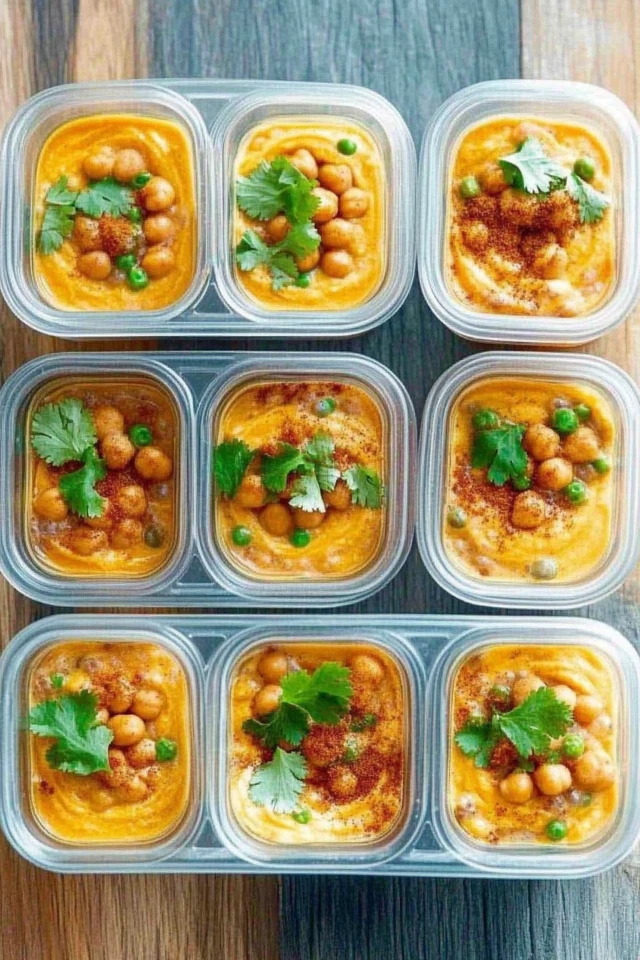
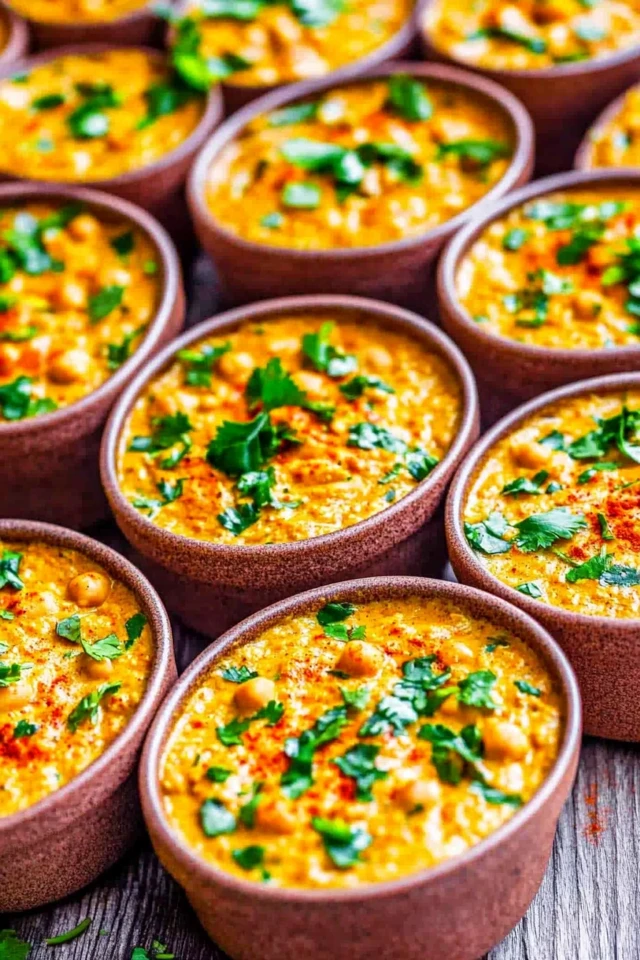
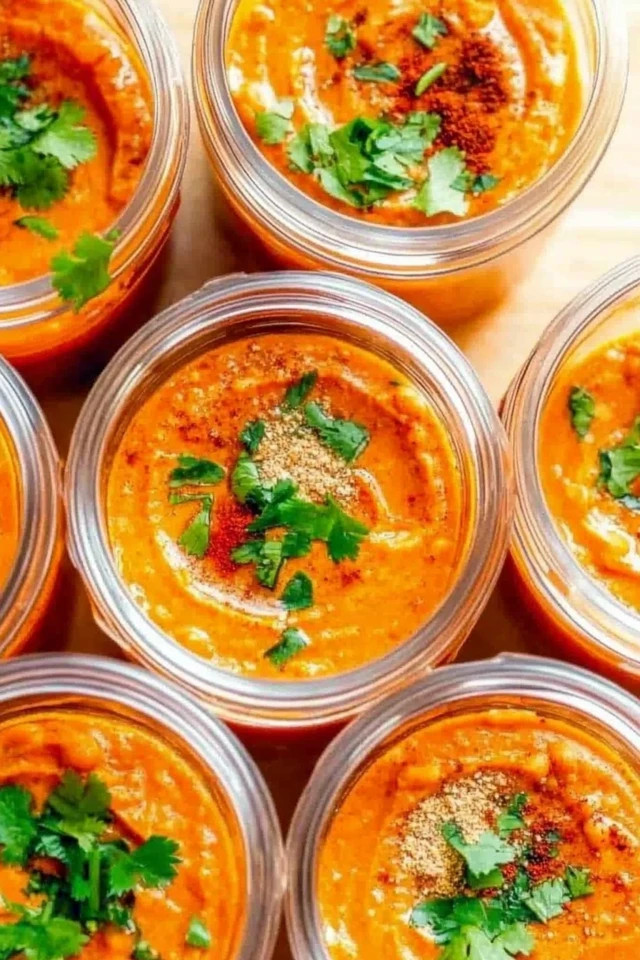
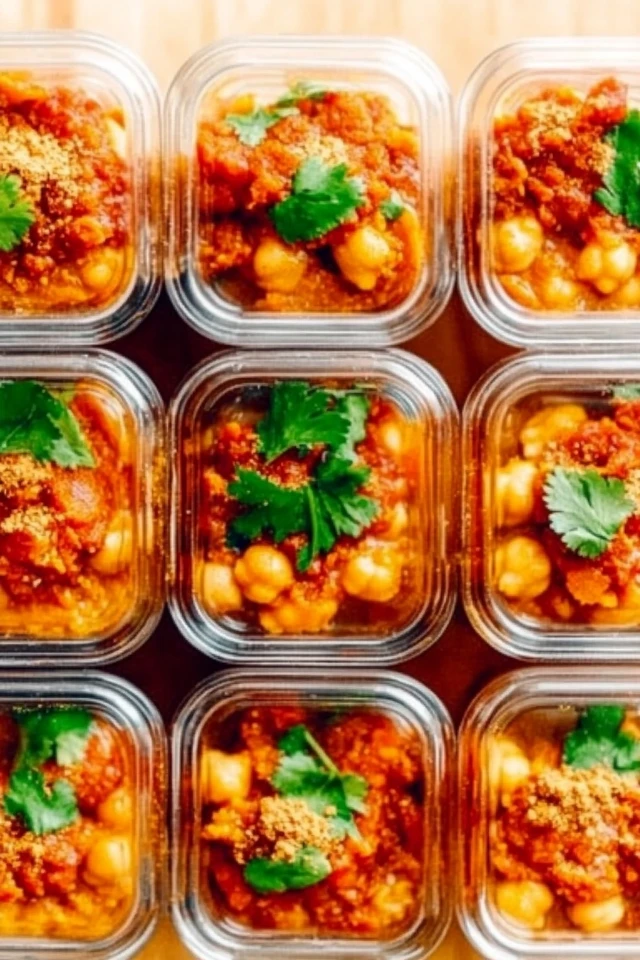



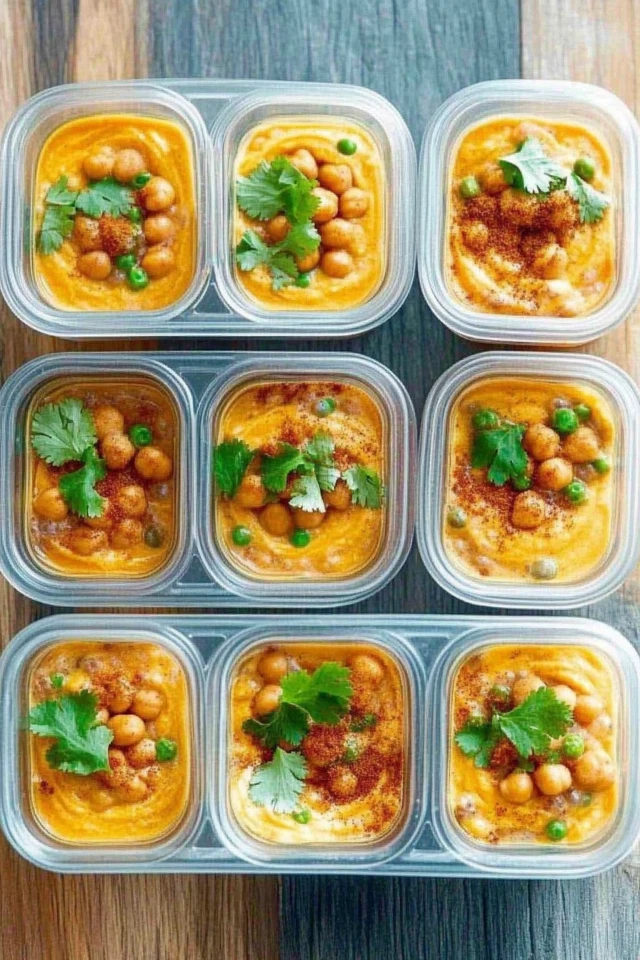

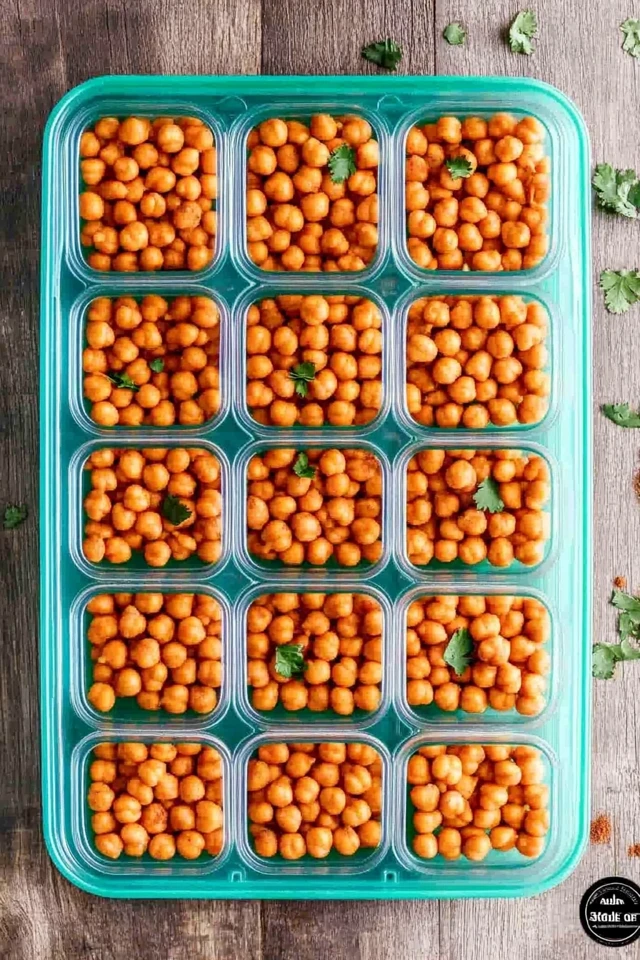
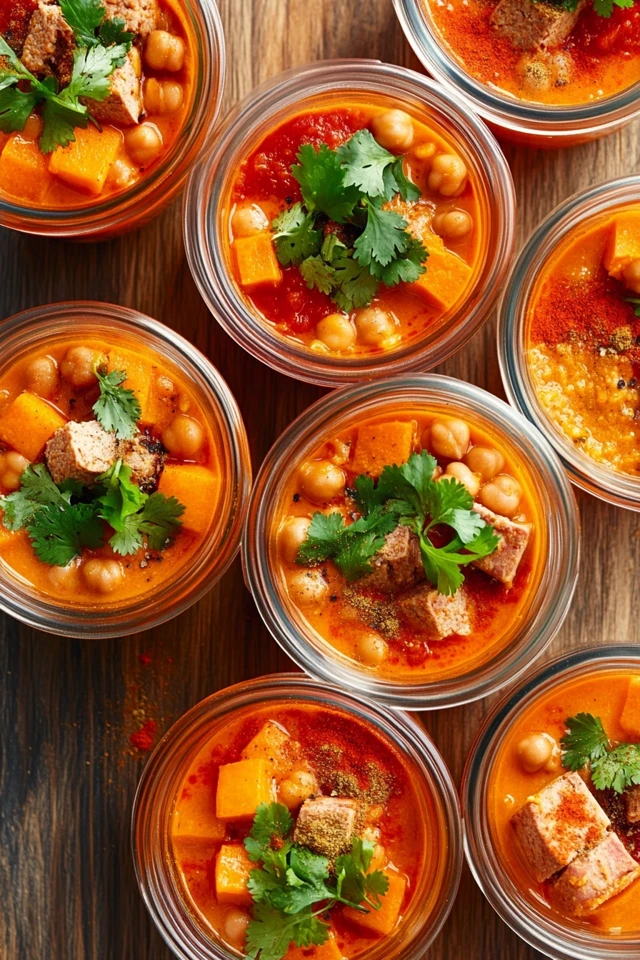
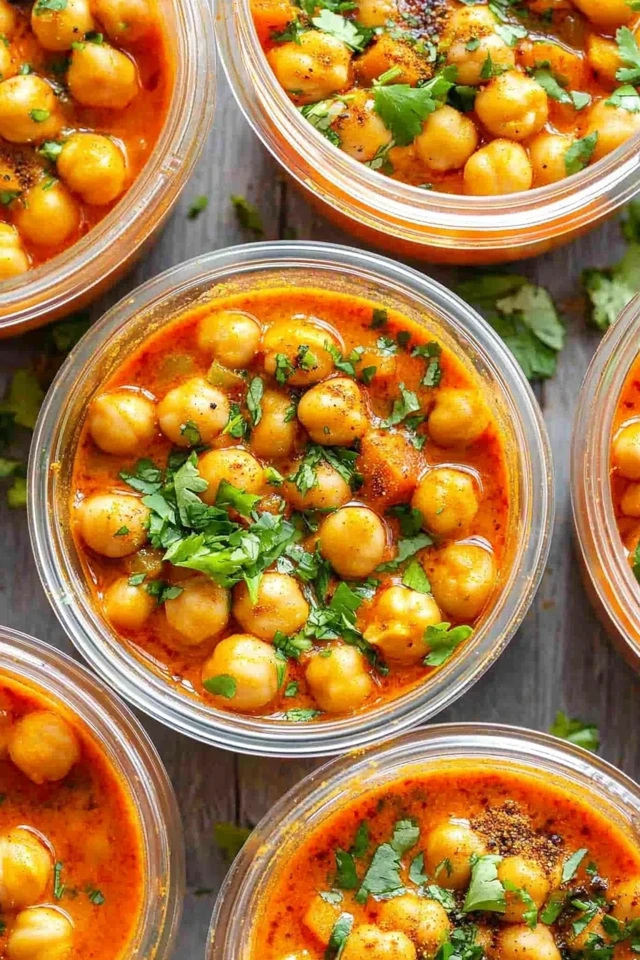
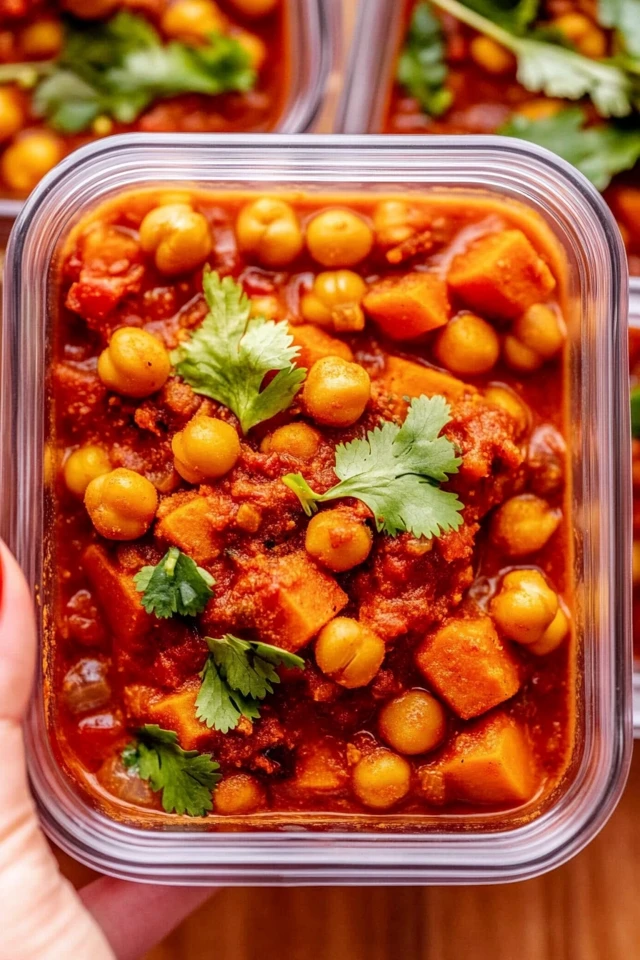
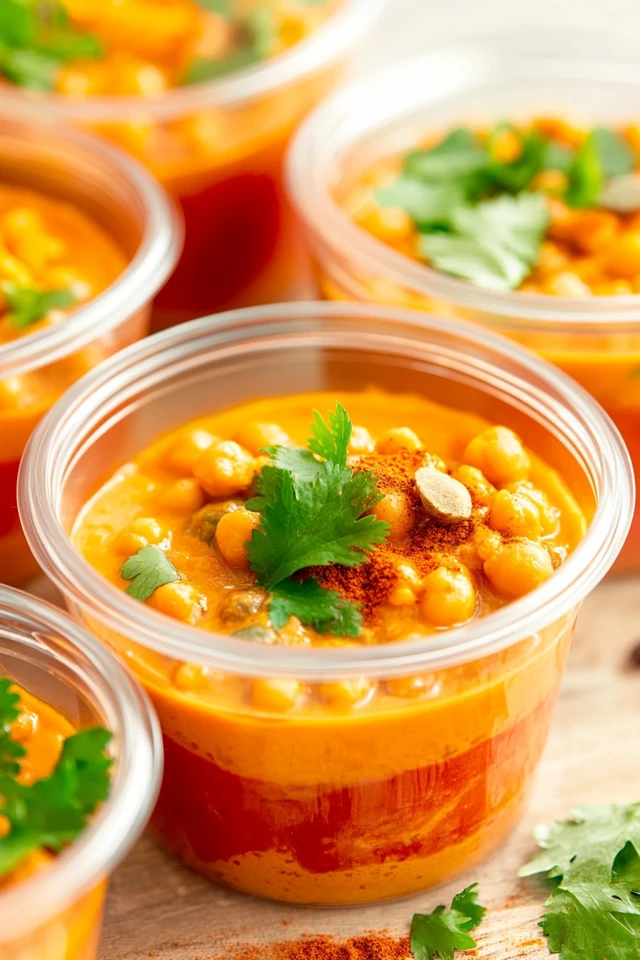
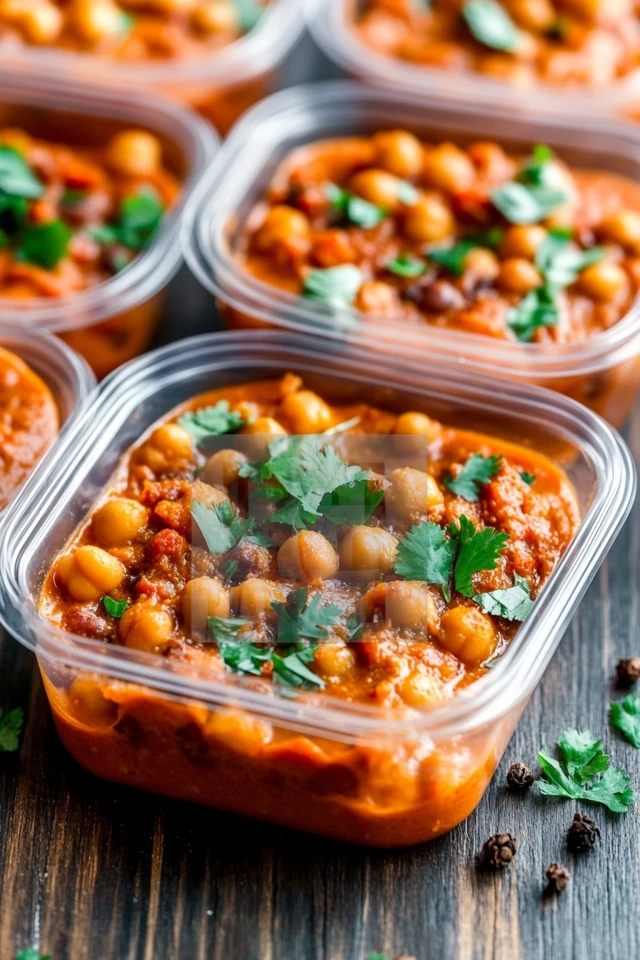
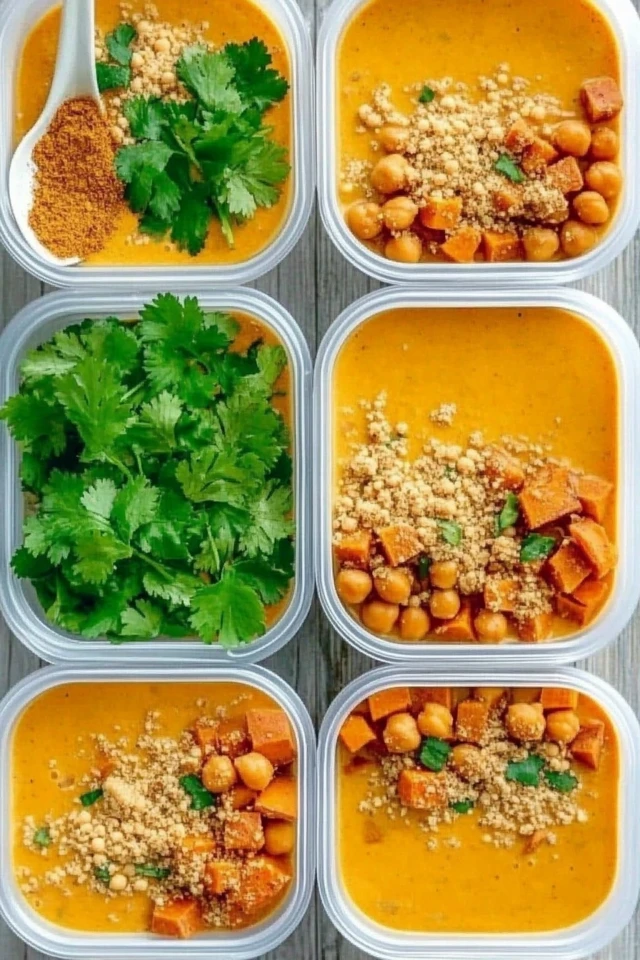
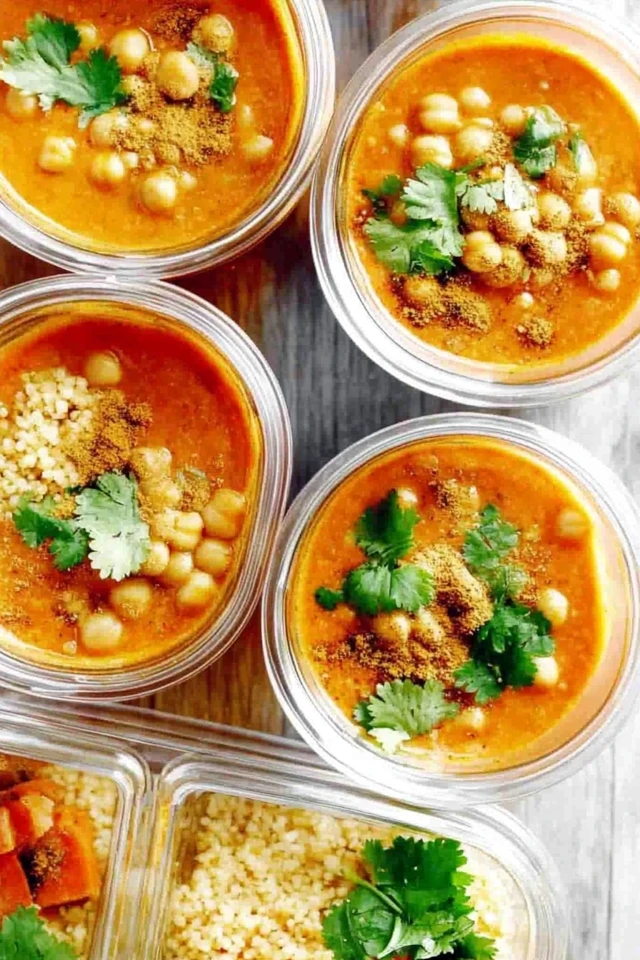
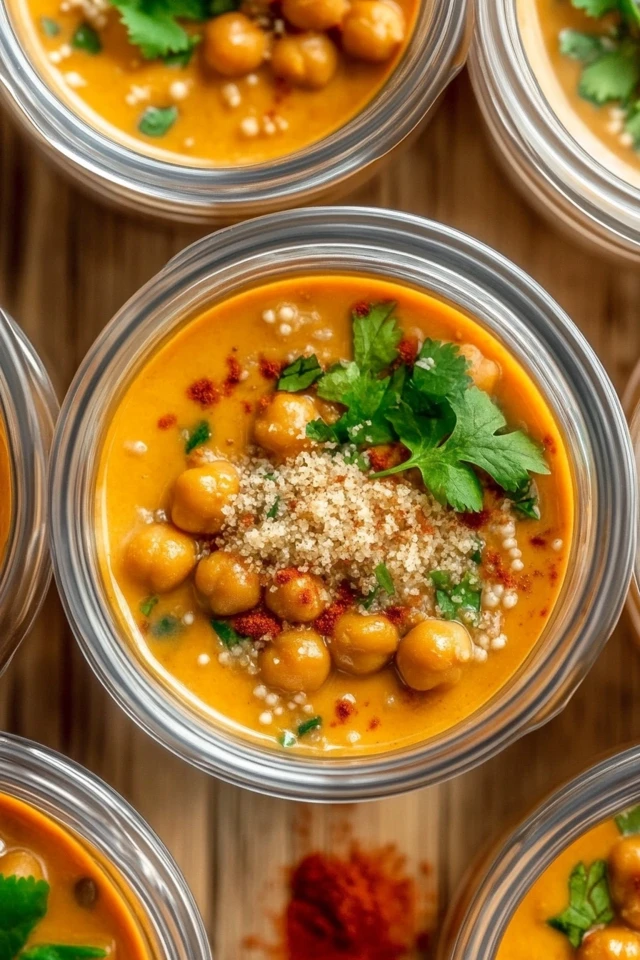
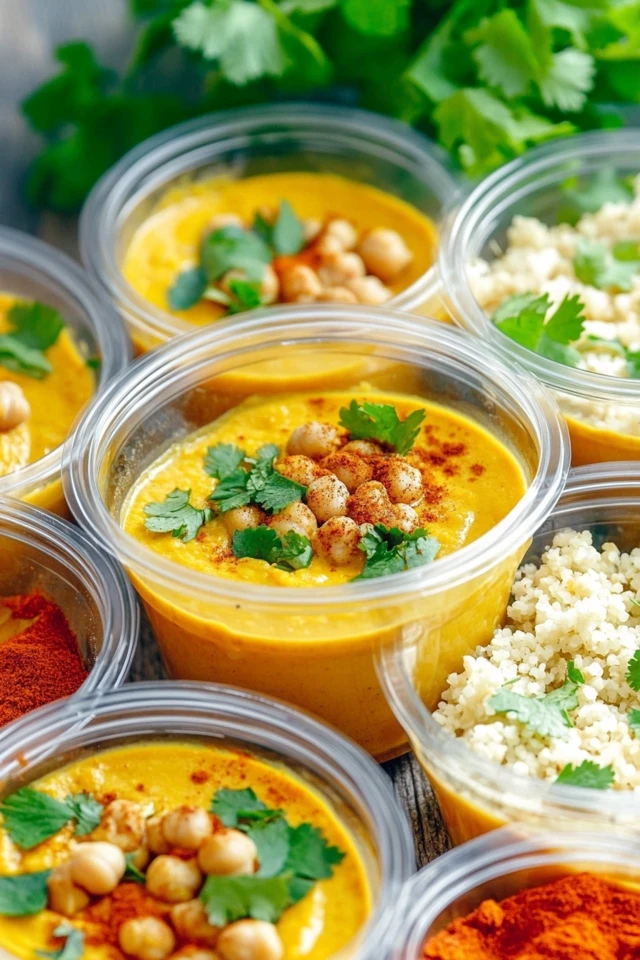
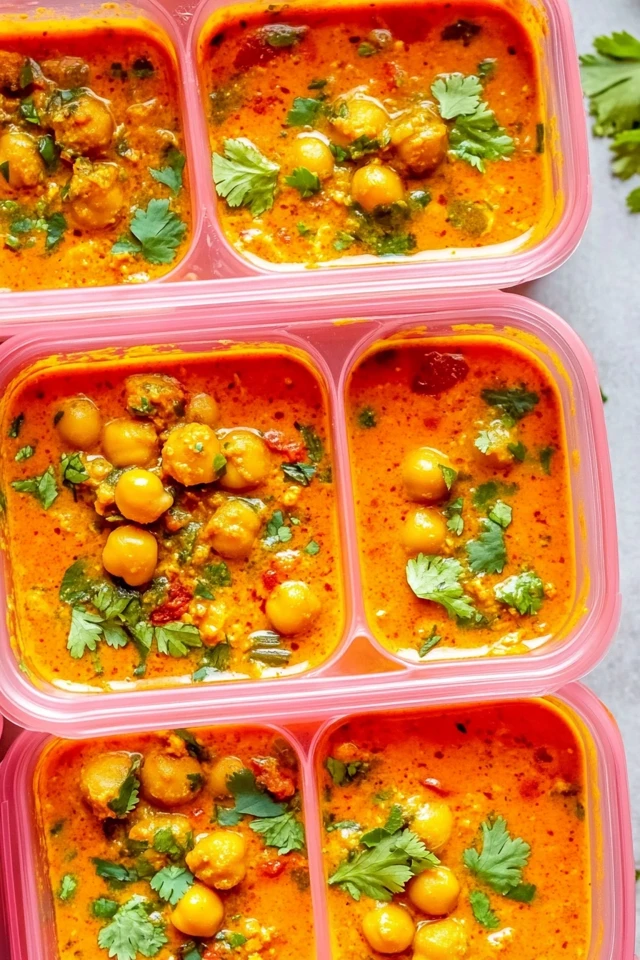
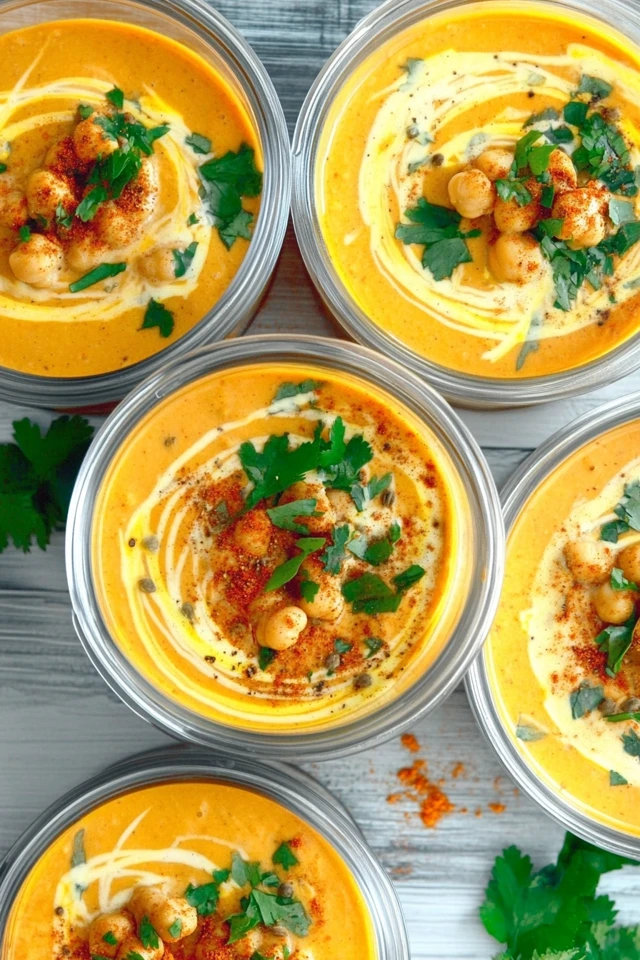


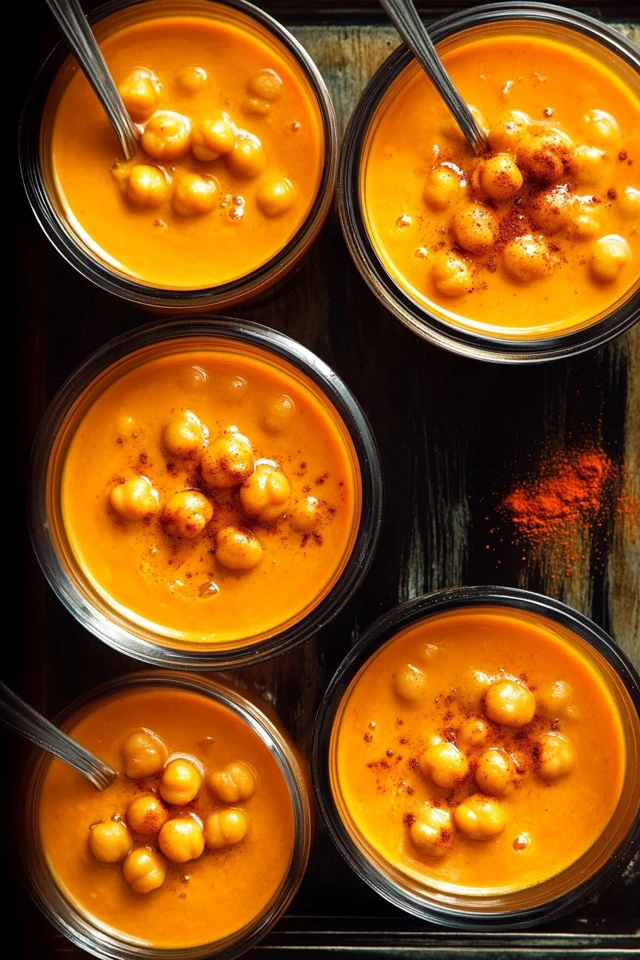
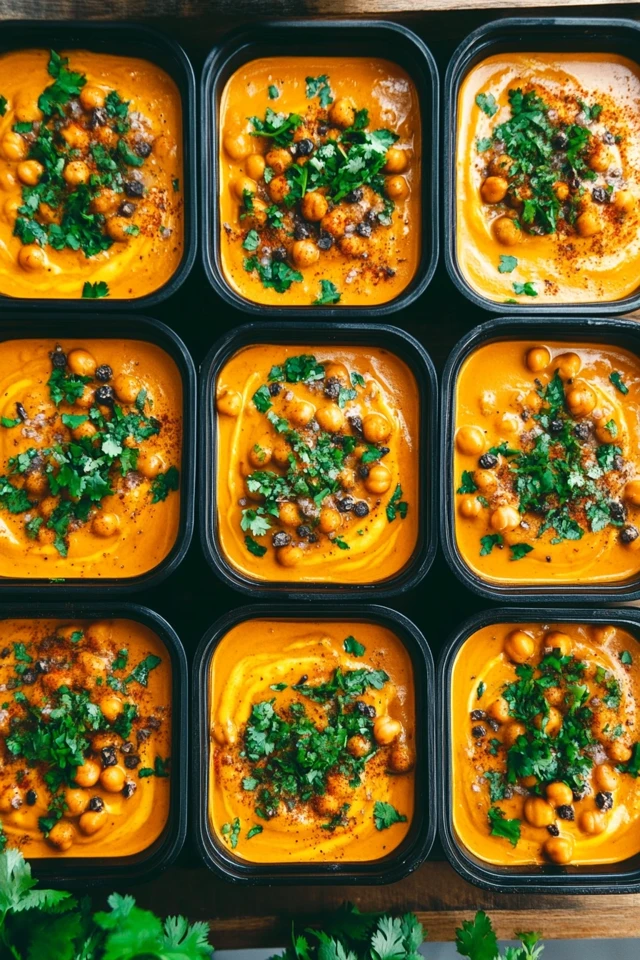
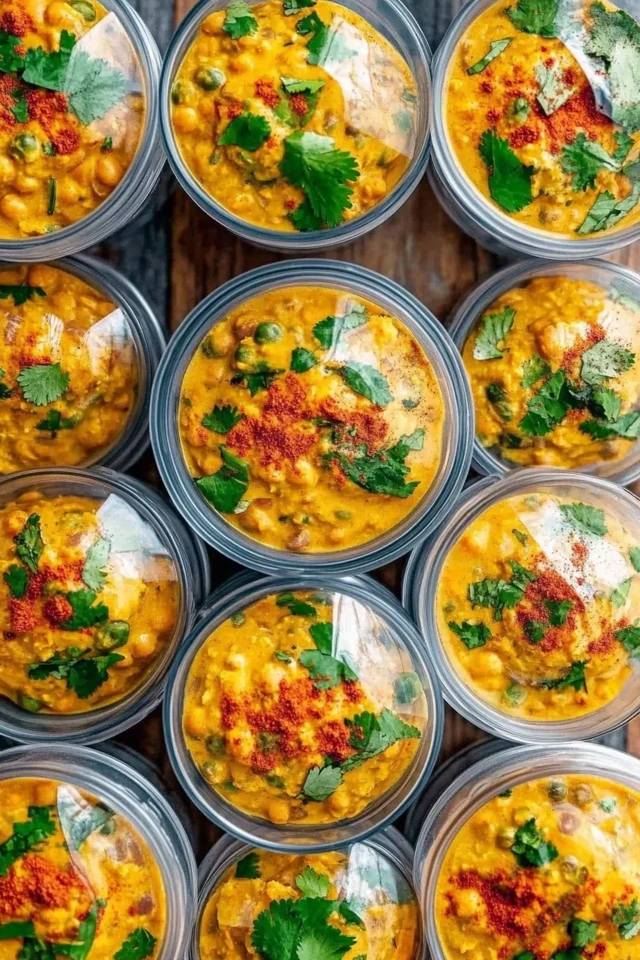
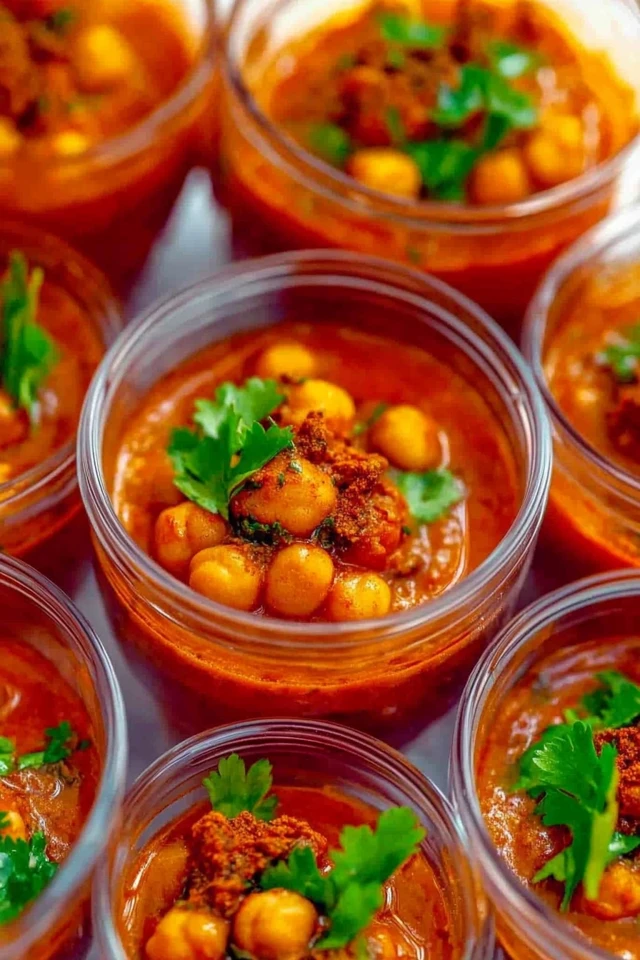
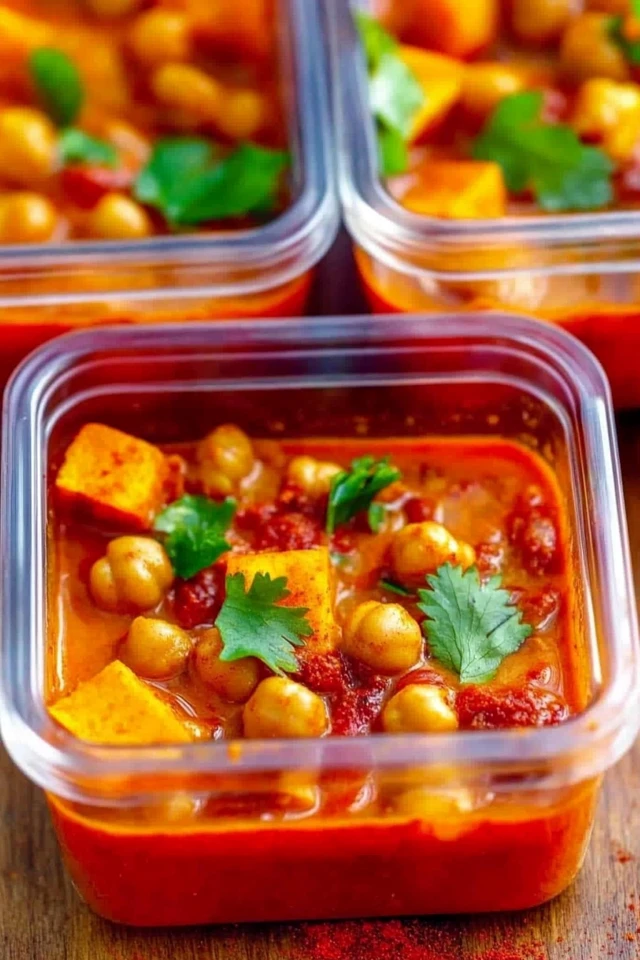
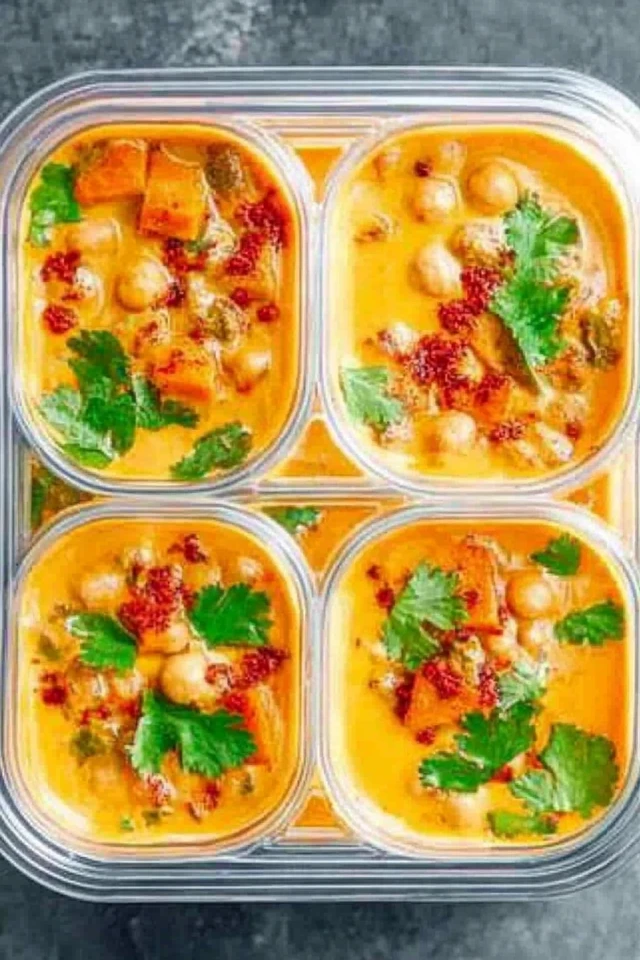
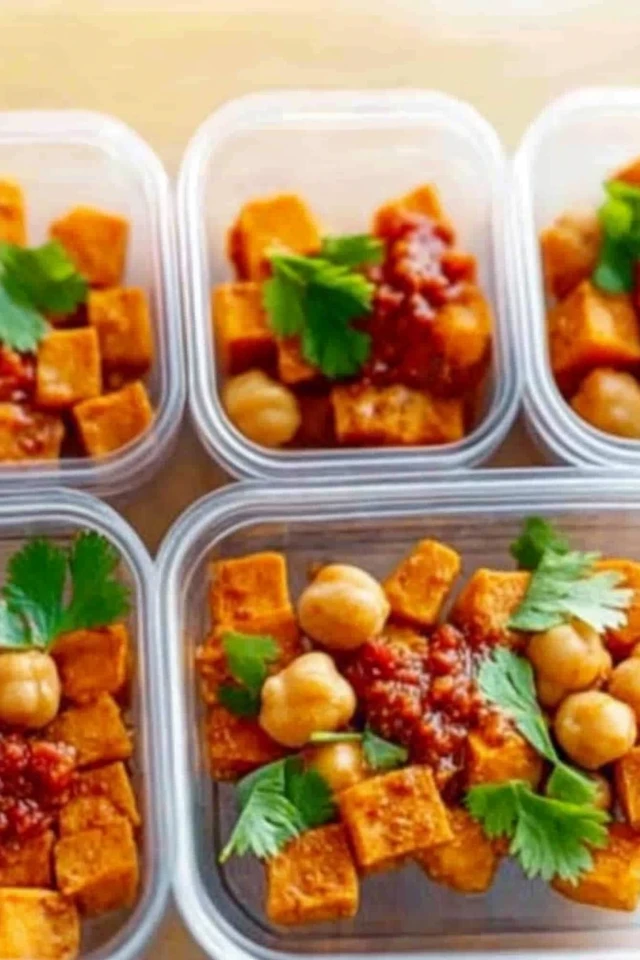
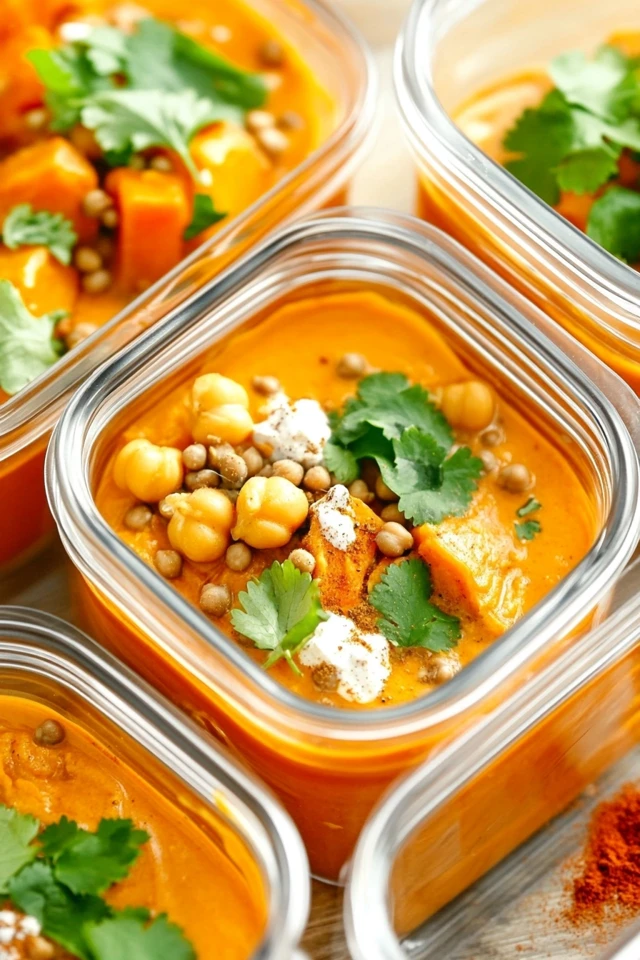
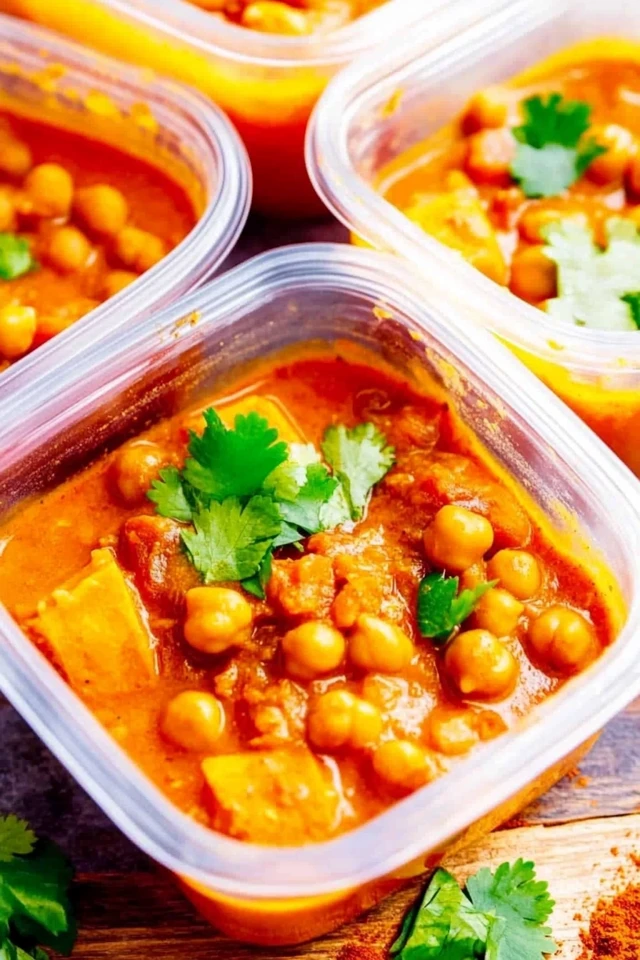
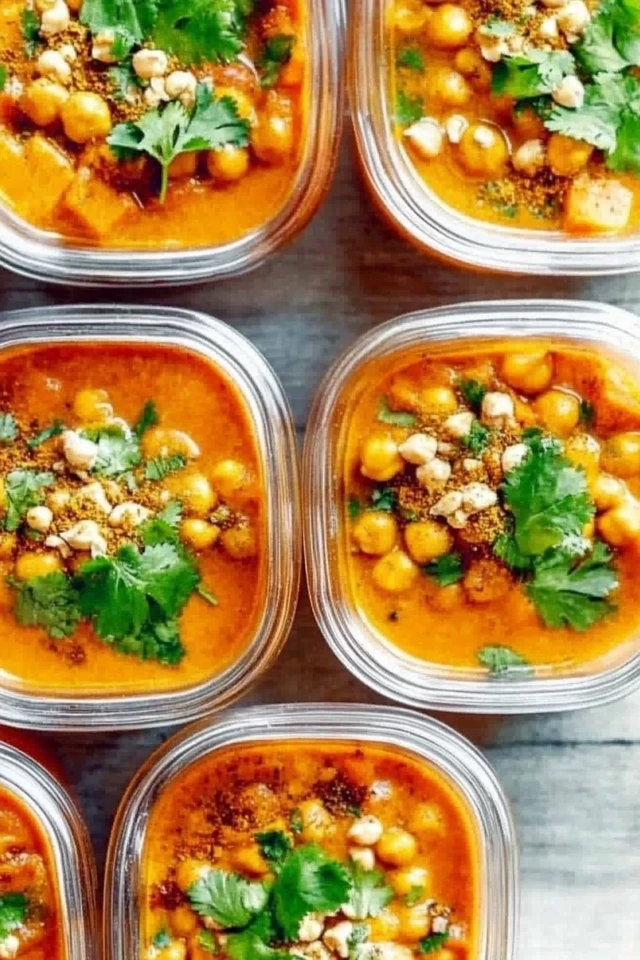
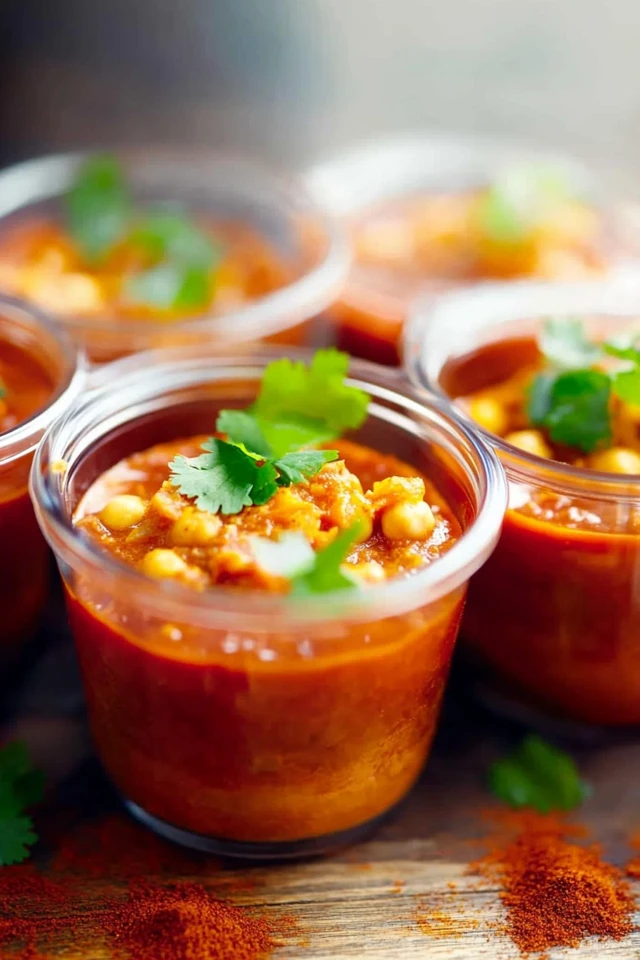
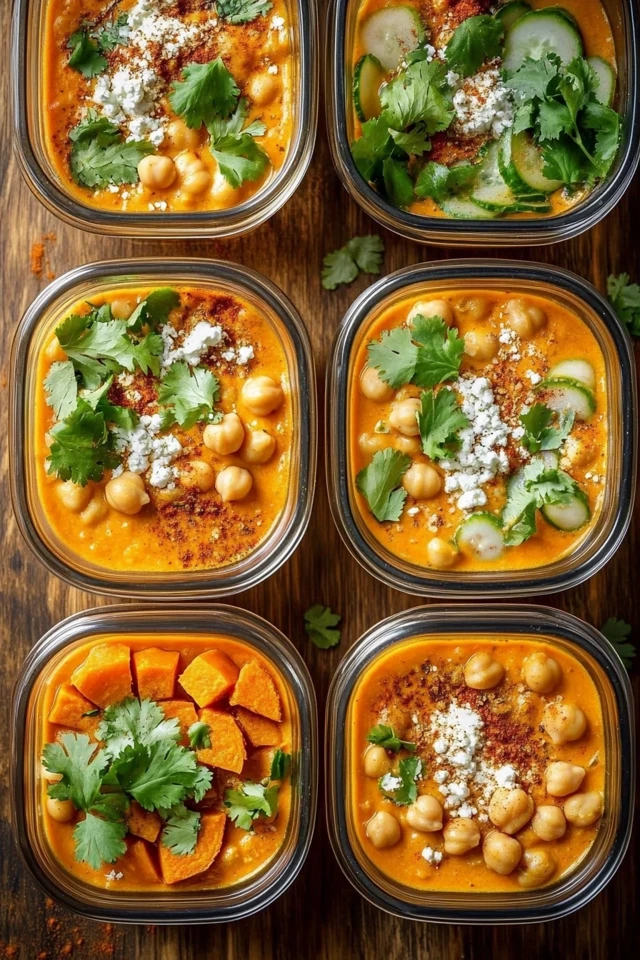
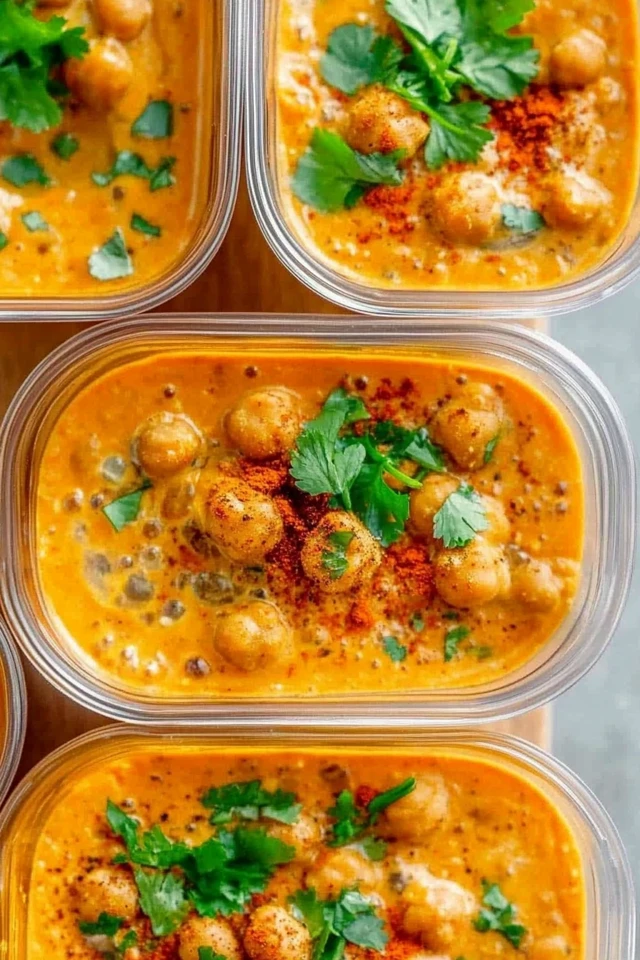
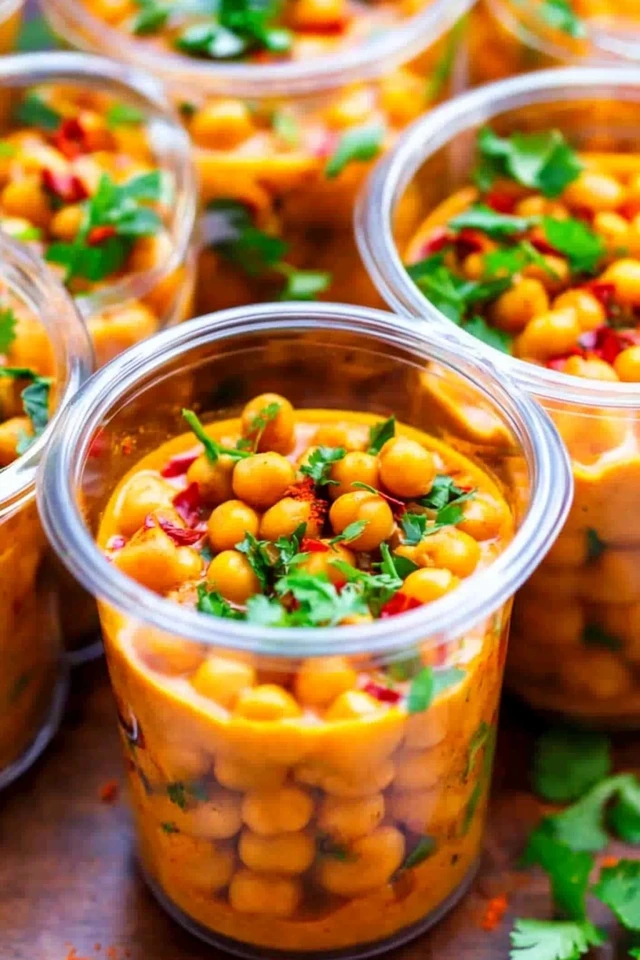
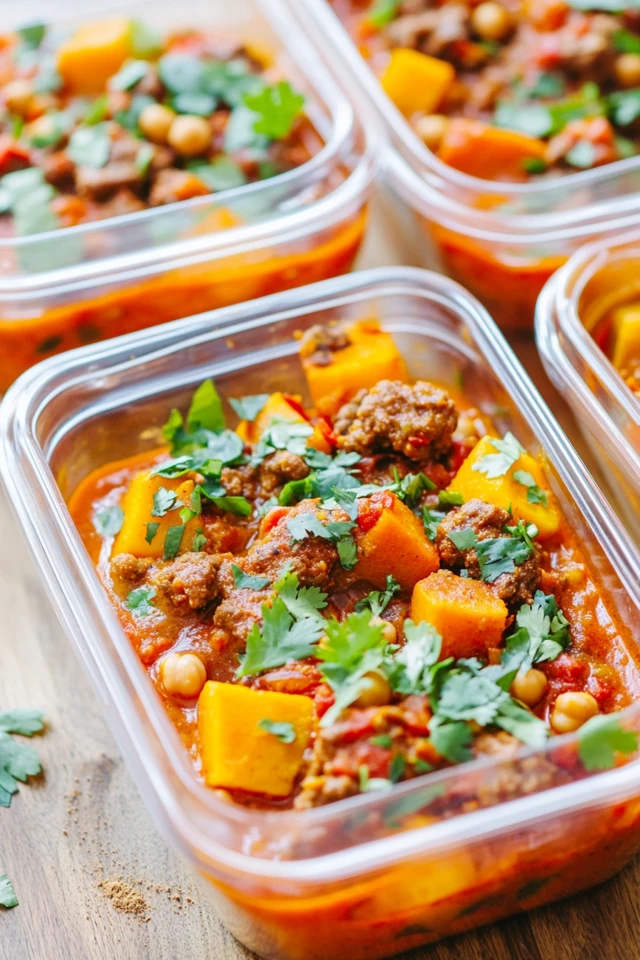
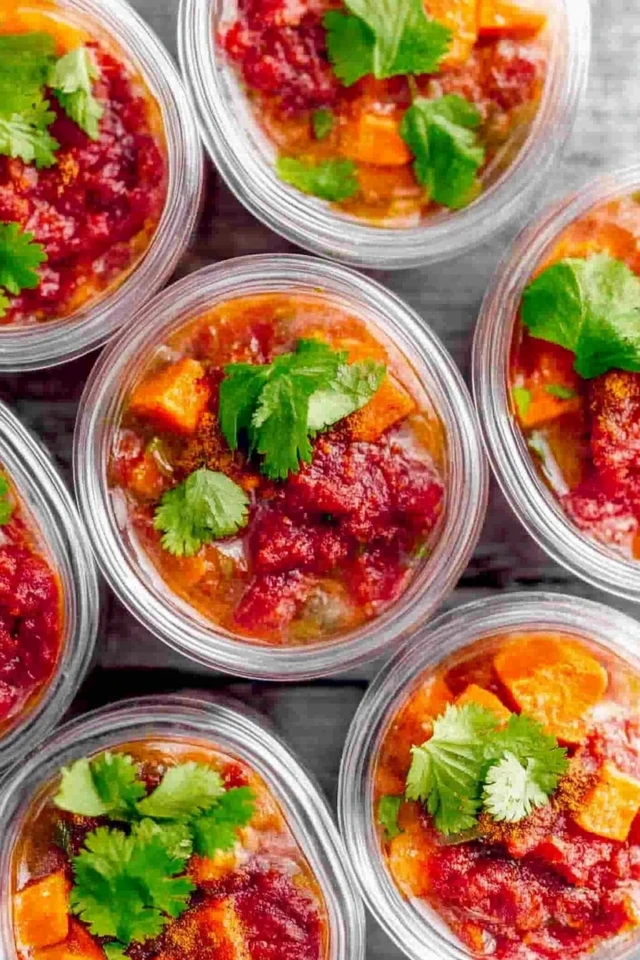
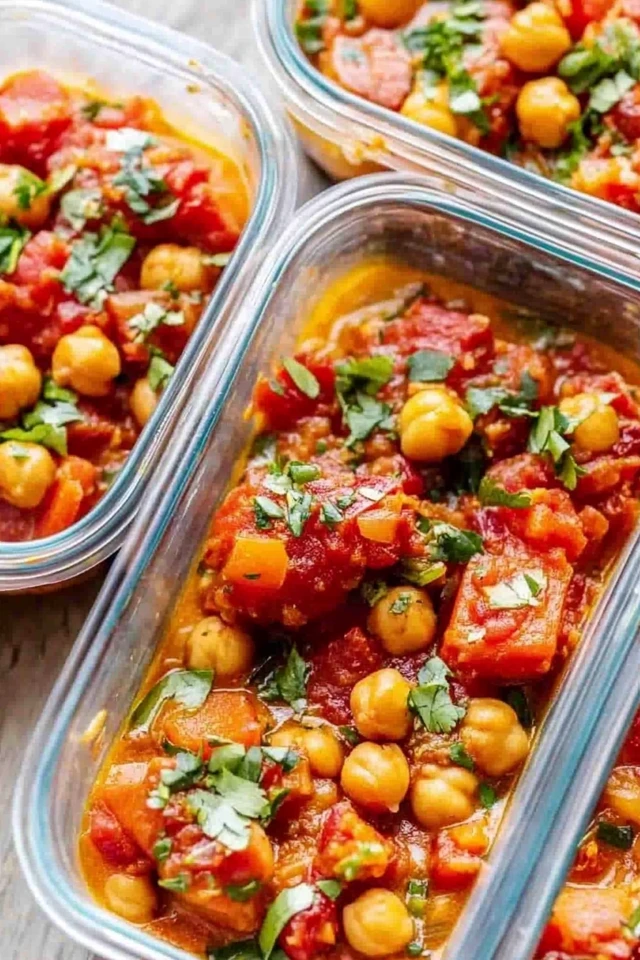
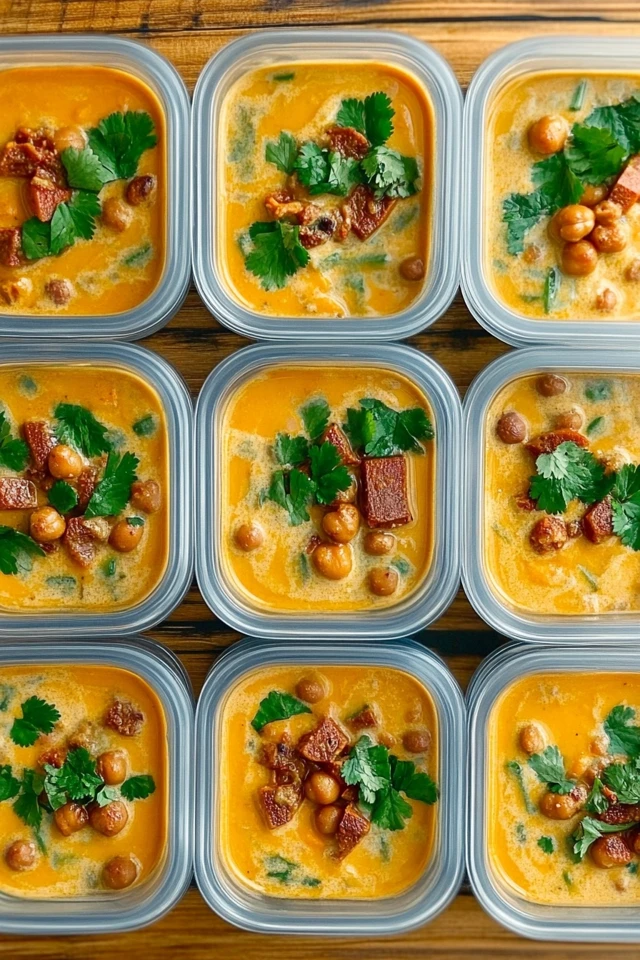
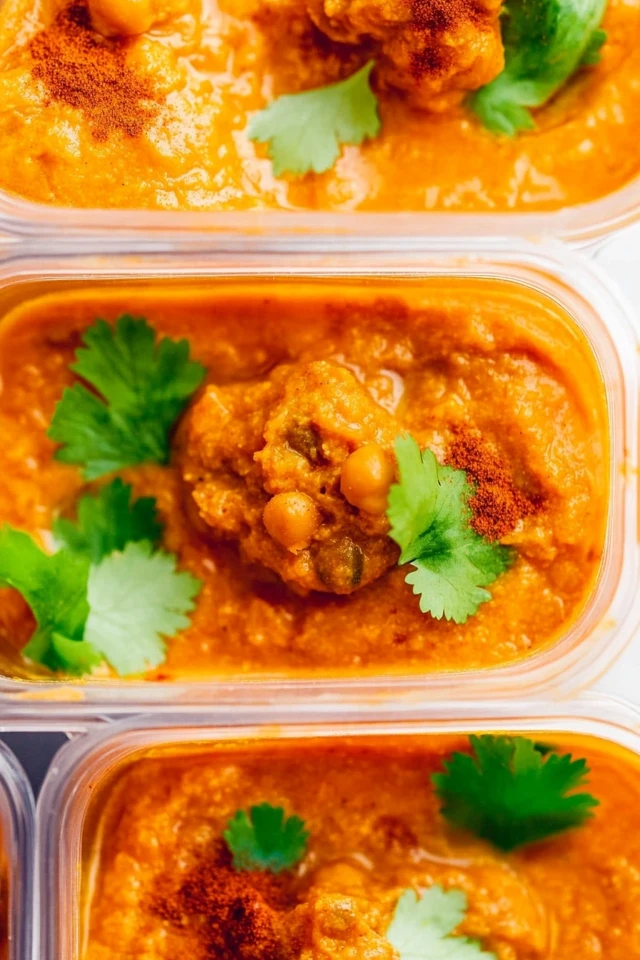
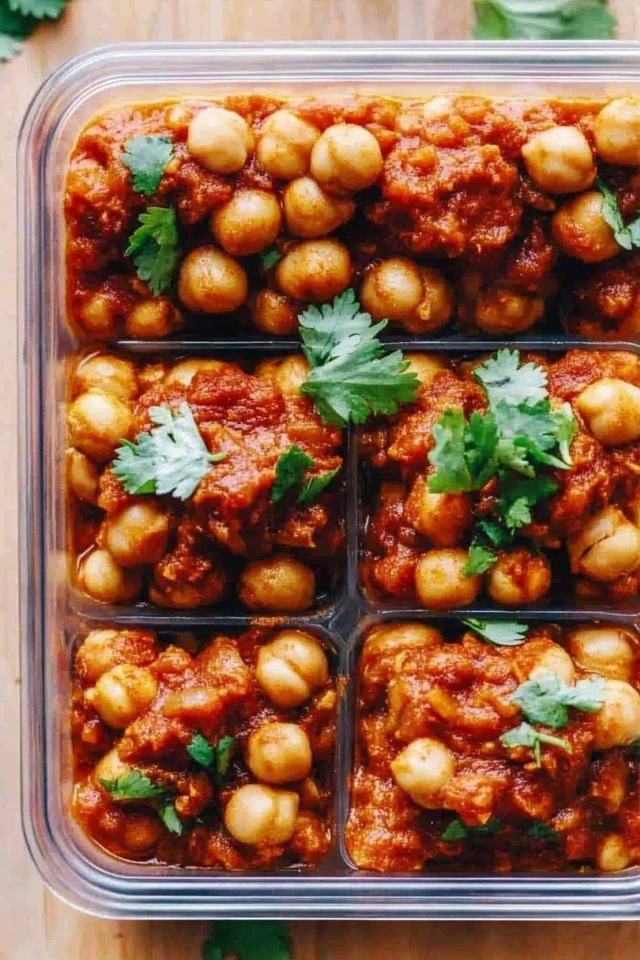
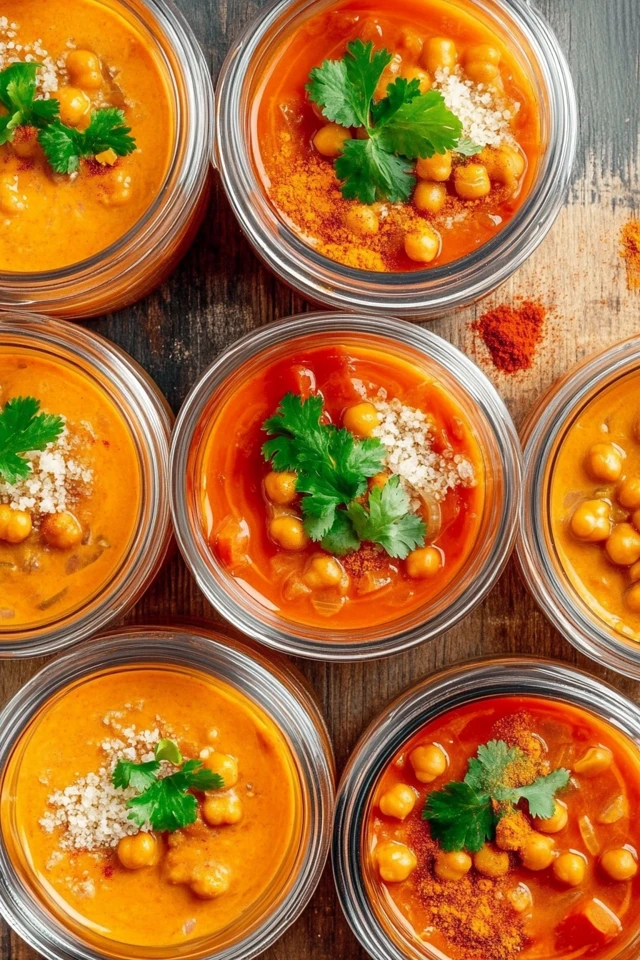

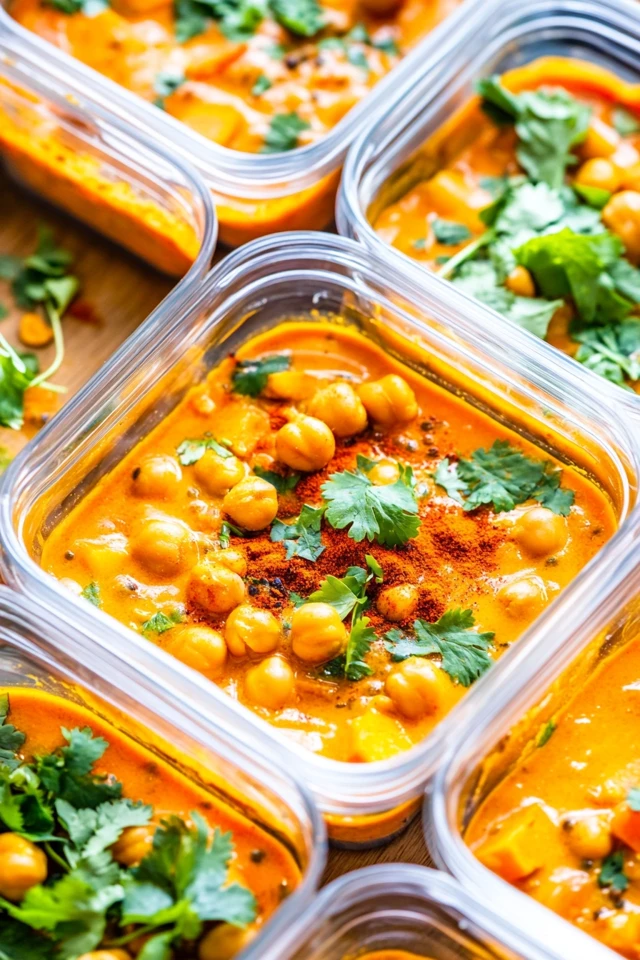
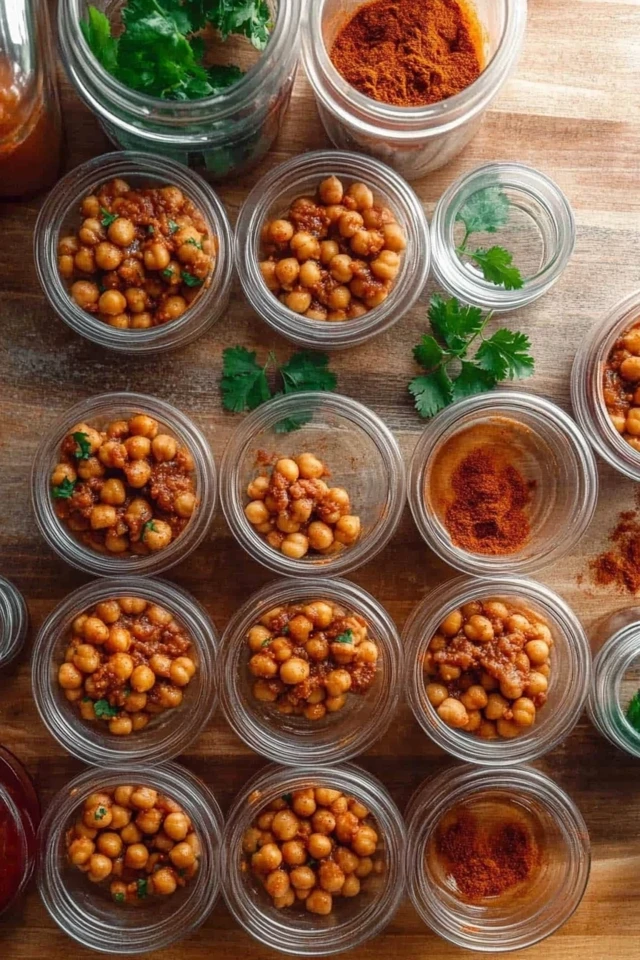

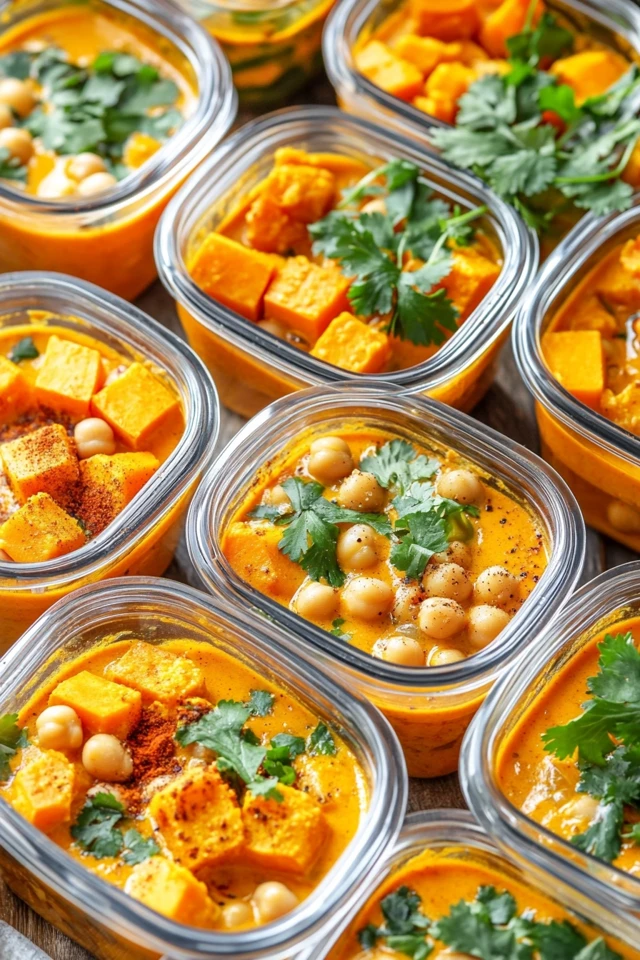
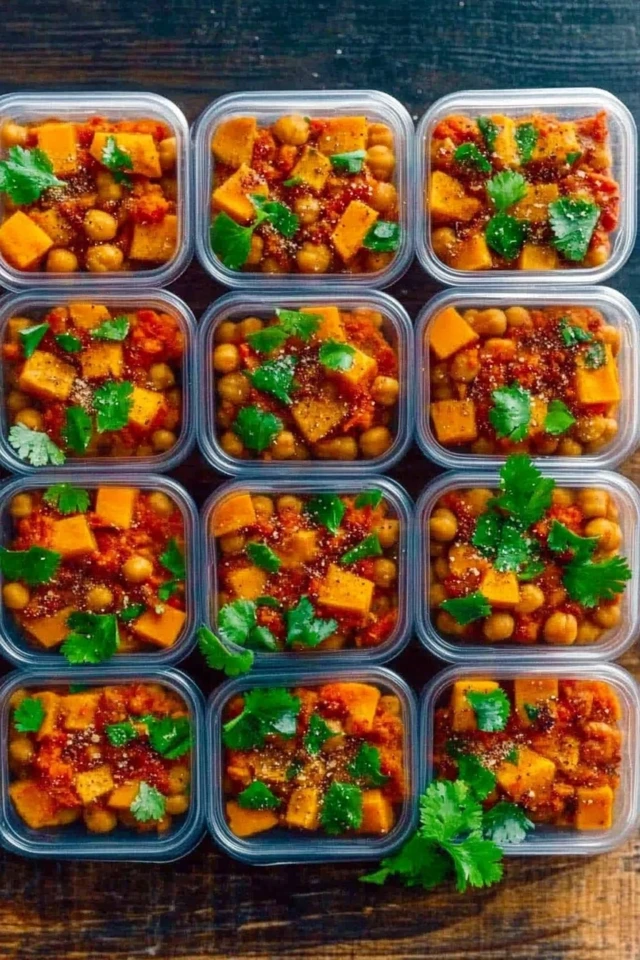

Frequently Asked Questions (FAQs)
1. Can I make these curry bowls gluten-free?
Absolutely! By using tamari instead of soy sauce and ensuring all other ingredients are certified gluten-free, you can make these Batch-Cooked Vegan Curry Bowls entirely gluten-free. Always check labels to confirm that your ingredients meet your dietary requirements.
2. How long can I store the meal prep containers in the refrigerator?
These curry bowls can be stored in the refrigerator for up to 5 days when kept in airtight containers. For longer storage, consider freezing individual portions for up to 3 months. Thaw frozen meals overnight in the refrigerator before reheating.
3. Can I use an Instant Pot or pressure cooker for this recipe?
Yes, using an Instant Pot or pressure cooker can significantly reduce the cooking time. Sauté the aromatics using the sauté function, then cook the curry under pressure for about 10 minutes. Release the pressure naturally before adding fresh herbs and garnishes.
4. How can I prevent the vegetables from becoming mushy?
To maintain the texture of your vegetables:
- Add Quick-Cooking Vegetables Later: Incorporate vegetables like spinach, green beans, and peas towards the end of the cooking process to prevent overcooking.
- Roast Separately: Roast firmer vegetables like carrots and sweet potatoes separately and add them to the curry just before serving.
- Control Cooking Time: Simmer the curry until the vegetables are just tender to retain their crunch.
5. What can I substitute for coconut milk to make the curry lighter?
If you prefer a lighter curry, you can substitute coconut milk with:
- Almond Milk: Provides a lighter texture with a subtle nutty flavor.
- Cashew Cream: Blend soaked cashews with water for a creamy, dairy-free alternative.
- Soy Milk: Offers a neutral taste and creamy consistency.
6. Can I add other proteins like seitan or edamame to the curry bowls?
Absolutely! Seitan and edamame are excellent plant-based protein sources that can be easily incorporated into your curry bowls. Simply cook them according to package instructions and add them to the curry along with other proteins.
7. How can I make the curry spicier?
To increase the heat level:
- Add More Chili Powder or Cayenne Pepper: Adjust the amount based on your spice tolerance.
- Include Fresh Chilies: Add sliced jalapeños, serranos, or Thai chilies to the curry during cooking.
- Use Hot Sauce: Drizzle your favorite hot sauce into the curry for an extra kick.
8. Is this recipe suitable for kids?
Yes, the Batch-Cooked Vegan Curry Bowls can be made kid-friendly by adjusting the spice levels. Reduce or omit the chili powder and cayenne pepper, and incorporate milder flavors like sweet potatoes and sweet bell peppers to cater to younger palates.
9. Can I add dairy-free cheese to the curry bowls?
Absolutely! Adding dairy-free cheese like vegan feta or shredded vegan mozzarella can enhance the flavor and texture of your curry bowls. Sprinkle it on top just before serving for an extra layer of richness.
10. How do I prevent the curry from sticking to the bottom of the pot?
To avoid sticking:
- Use a Heavy-Bottomed Pot: A heavy-bottomed pot ensures even heat distribution, preventing hotspots that cause sticking.
- Stir Frequently: Regular stirring, especially after adding the liquids, helps prevent the curry from sticking.
- Use Non-Stick Cookware: Consider using non-stick pots or pans for easier cooking and cleanup.
About the Author
Welcome to Vegan & Plant-Based Kitchen! I’m Julio Arco, a passionate vegan chef dedicated to creating delicious, easy-to-make plant-based recipes that nourish both body and soul. Since embracing a vegan lifestyle in 2010, I’ve been on a culinary journey to explore the endless possibilities of plant-based cooking. From wholesome meal preps to indulgent desserts, my mission is to inspire and empower you to embrace a compassionate and healthy lifestyle through wholesome food.
Join me on this journey as we explore diverse flavors, experiment with fresh ingredients, and celebrate the beauty of plant-based living. Let’s create, share, and enjoy the goodness of vegan cooking together!
Disclaimer: This blog post is intended for informational purposes only. Always consult with a healthcare professional before making significant changes to your diet.

